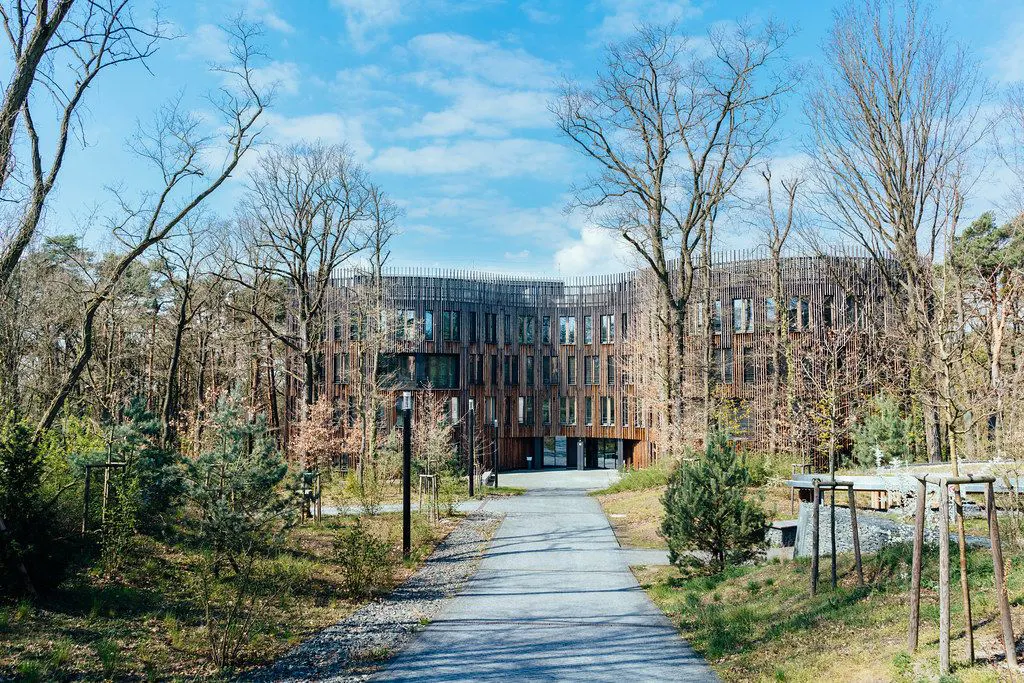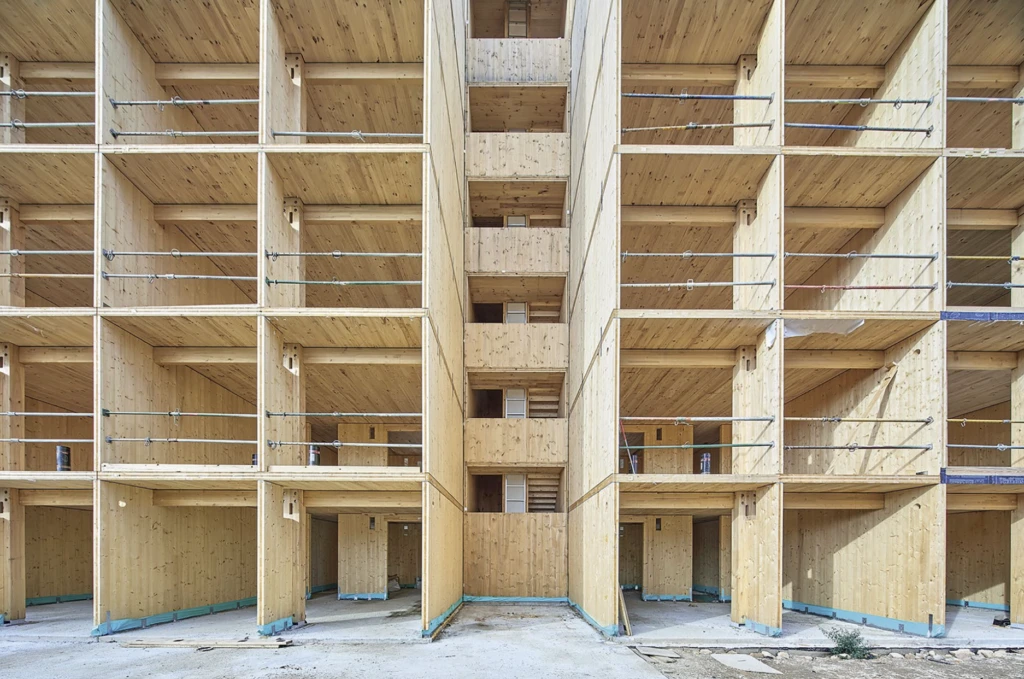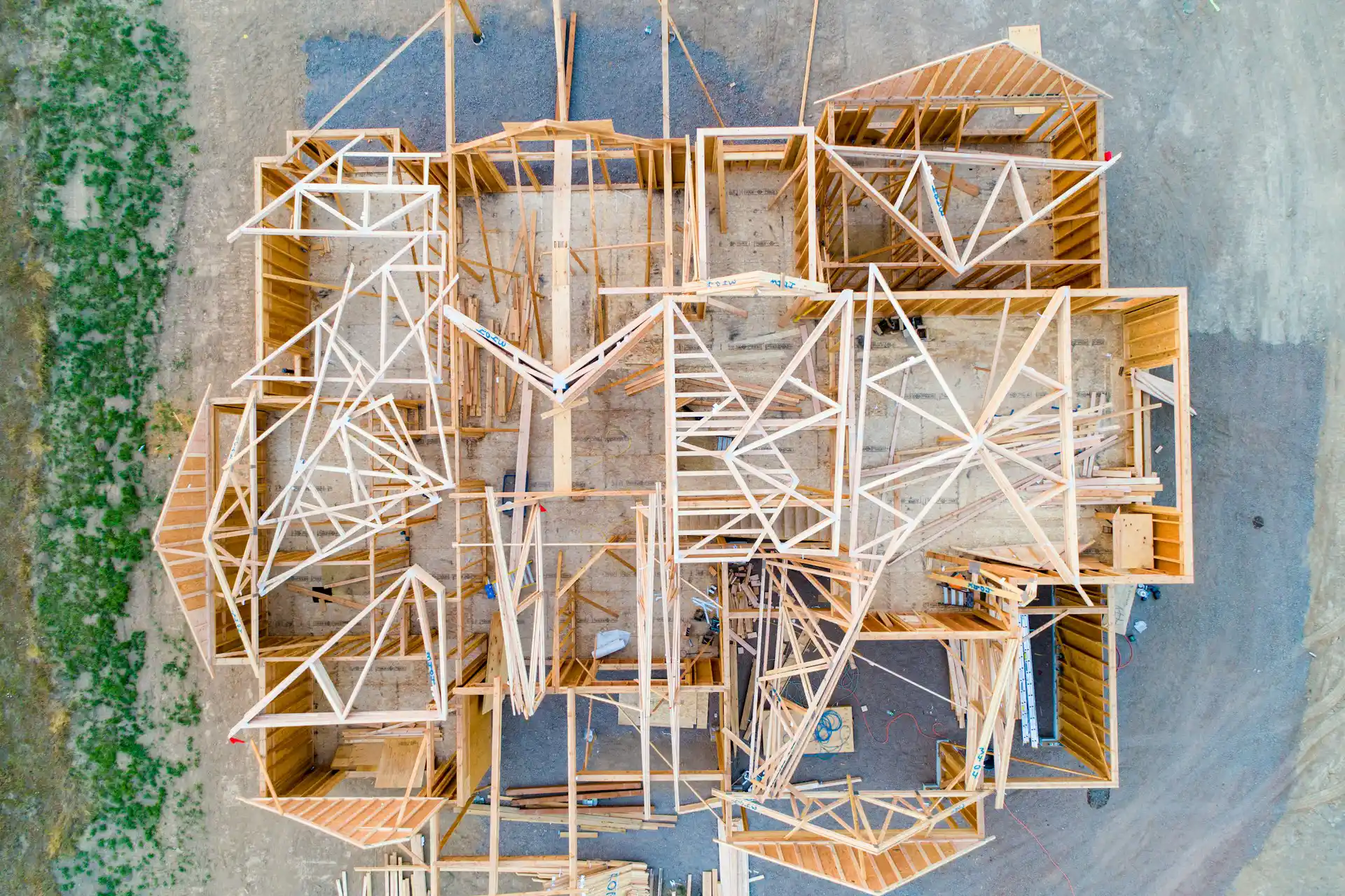That the future of construction lies in wood is something many people linked to the world of architecture and sustainability already know, but it may still surprise those outside these fields. Even within the sector, there remains a belief that it is a marginal trend, especially in Spain, which is so closely tied to concrete and brick. Moreover, wooden construction drags along myths, such as it being less robust and much more flammable.
However, in the 21st century, technology has made it possible for wood buildings to withstand the elements better than those made of concrete and steel. And, of course, the main advantage: sustainability. Currently, construction is responsible for 39% of CO2 emissions into the atmosphere, of which 11% comes from the manufacture of materials and products like steel, cement, and glass. Additionally, with the expected population increase in cities in the coming years, more housing and commercial spaces will be needed: building them using conventional methods would cause more than half a million tons of carbon dioxide equivalent (tCO2e), according to data from the United Nations Economic Commission for Europe (UNECE). Using wood for just half of these buildings would reduce annual tCO2e to 150,000. Furthermore, the resulting buildings are more insulating, absorb carbon, and create a healthier space. So, what’s stopping us?

“In many architecture schools, wood isn’t even mentioned as a material“, laments Daniel Ibáñez, director of the Institute for Advanced Architecture of Catalonia (IAAC), with whom we have already connected in this space to discuss the institution’s work. This gap in many schools — though not all — is one of the major barriers facing wooden construction. If there are no architects or developers who know the possibilities and advantages of this path that Europe already deems essential, how will this mode of construction spread in a country so anchored in concrete?
Learning the basics of wooden construction
Wood is a clear example of the need for ongoing education in the sector. If we wait for the next generations of architecture professionals to graduate — assuming the material will become more prominent in their studies in the coming years — and reach a level where they have more decision-making power, it may be too late to meet the urgent goals set by climate change.
At the IAAC, where they have been working with wood since 2007 (and have even promoted the European Mass Madera network), they detected through surveys that “many prescribers know how to build with this new system, especially related to CLT,” Ibáñez points out. This is a major problem because “if the architect, who is the one who conceives, doesn’t dare to build with wood, it won’t be built with wood.” From this realization, the idea emerged: a training program for active professionals to gain basic insights into the world of this material. This is the seed of the Executive Program in Industrialized Wood Building, directed by Ibáñez himself, and supported by Finsa and Mass Timber.

Ibáñez insists that it is not a master’s degree nor a program from which experts in the material will emerge, but rather something designed for architects, designers, or prescribers who show curiosity about the world of wood and want to know where to start to launch projects, for example, with CLT. “We give them that minimum knowledge so they dare to design, promote, and even push competitions related to the material”, he explains. “They will feel supported, get to know the industry, know who the engineers behind it are, what the basic rules are, see case studies they can use as models, etc. These are the basics to get started“, Ibáñez notes. Being designed for professionals, only three of the sessions, which will be held over seven weeks, will be in-person: one at the beginning, one in the middle, and one at the end.
As a sign that training in wood is a gap many in the sector want to start filling, they are noticing interest not only from the world of architecture but also from construction development companies. “It’s a phenomenon we’re seeing lately. The big developers in this country continue with concrete, but all are beginning to want to do a development in wood so that if the world finally goes that way, they won’t be left behind,” he indicates.
They also expect attendees from public administration. “In these years, I’ve had many conversations. For example, I remember a day when I was with 32 officials from the Government of Aragón, who were very interested in seeing how to promote public housing projects following the case of the buildings we’ve done in Barcelona. They have many doubts, many questions, and a program like this could help them a lot,” he says.
What was learned 15 years ago might be obsolete
As an indication of why there is this growing interest in wood even among those who were always more skeptical, Ibáñez explains that, although we may not be very aware yet, the investment ecosystem in real estate is shifting in that direction. “It’s a change that goes hand in hand with not investing in assets that may be considered toxic in a few years. Funds are looking to invest in decarbonizing and ecological projects, which is a great driver for transformation”, he adds.
But wood is not the only topic for which this extra training is needed. Even when one has studied at an architecture school that is focused on the future and is capable of detecting and training in the various trends, technology advances very quickly, and what was learned fifteen years ago might already be obsolete.

“There is another radical change, linked to wood, but also to other materials, which is industrialization and digitalization“, says the IAAC director. As we mentioned earlier, although digitizing the planning of large-scale projects could reduce the budget by 80% and speed up execution by 20%, currently only 42% of the construction sector is digitized, partly because it is too anchored in a different construction tradition. “I think we have a lot of territory to tackle there, industrializing and digitizing not only with wood but also with other materials”, Ibáñez adds.
Finally, digital robotic manufacturing and artificial intelligence will also have an important role in that future for which professionals should be prepared. “Especially in the computational design of buildings, there will be a future development line that will be important”, the expert comments on the impact of new technologies on construction.
As in any career and any sector, continuing to train and acquire knowledge that complements what was learned during the years of study is of great relevance in the world of architecture. It is important for people professionally linked to the industry but also for the entire population: the people who will live in those houses and inhabit that world in which construction also follows the path of sustainability.




